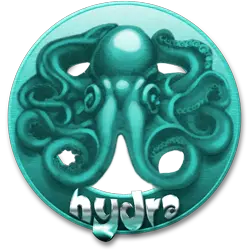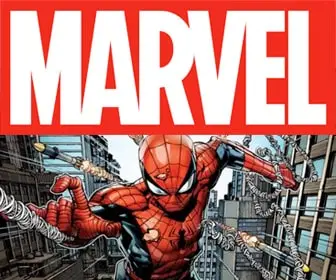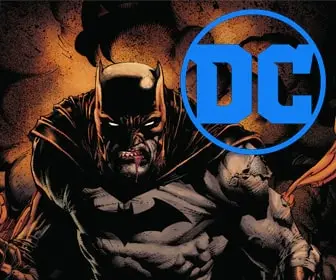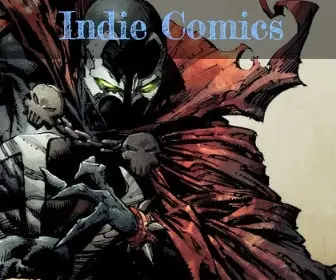
Comic Book Heroes: The Genius of Alan Moore
In a dystopian future painted with rain-streaked grime, a retired hero wrestles with his troubled past. This isn’t the origin story of a bright-eyed rookie – it’s the world of Watchmen, a groundbreaking comic book that shattered expectations. Its creator, Alan Moore, isn’t your average superhero scribe. He’s a literary architect who used comic panels as his canvas to redefine the genre. Moore’s influence stretches far beyond capes and tights. He’s a magician of words, weaving tales that blend historical fiction, dark fantasy, and social commentary. This article delves into the mind of the man who deconstructed heroes, explored the occult, and left an indelible mark on the world of comics.
Early Life and Influences
Born in 1953, Alan Moore’s upbringing in a working-class town in England wasn’t exactly a superhero origin story. However, the streets of Northampton became his own personal stomping ground, fostering a love for storytelling and a keen eye for the social realities that would later shape his work. Comics weren’t just a childhood escape for Moore; they were a portal to fantastical worlds. Early influences like the psychedelic art movement and the counterculture of the 1960s fueled his imagination, planting the seeds for the unconventional narratives and explorations of magic that would become hallmarks of his writing.
Deconstructing the Superhero
Moore wasn’t content with simply telling superhero stories; he tore them apart and rebuilt them with a critical eye. In his now-legendary graphic novel Watchmen, the heroes aren’t paragons of virtue. They’re flawed, troubled individuals wrestling with their pasts. The world they inhabit is a dark reflection of our own, filled with political turmoil and social unrest. This deconstruction of superhero tropes challenged readers’ expectations. Instead of clear-cut battles between good and evil, Watchmen presented a morally ambiguous world where the lines between hero and villain blurred. This wasn’t just a story about saving the day; it was a commentary on the real-world consequences of unchecked power and the burden of heroism. Moore’s deconstruction didn’t stop with Watchmen. In V for Vendetta, a masked vigilante wages war against a totalitarian government. But V himself is a complex figure, raising questions about the nature of rebellion and the price of freedom. By stripping away the glitz and glamor of traditional superheroes, Moore forced readers to confront the darker implications of these fantastical figures.
Beyond the Cape
While Moore’s deconstruction of superheroes is iconic, his talents extend far beyond the cape-wearing crowd. He ventures into the realm of historical fiction with “From Hell,” a gripping exploration of Jack the Ripper that weaves psychological horror with social commentary on Victorian-era London. His imagination takes flight in “League of Extraordinary Gentlemen,” where literary icons like Sherlock Holmes and Captain Nemo join forces in a fantastical adventure that celebrates classic literature. Moore isn’t afraid to experiment with genre, blending elements of magic realism and political satire to create truly unique stories. He throws in literary references for good measure, challenging readers to delve deeper and appreciate the richness of his narratives.
The Legacy of the Magician
The impact of Alan Moore on the comic book industry is undeniable. Before Moore, comics were often seen as childish entertainment. He helped elevate the medium to a new level of sophistication, proving that comics could tackle mature themes and complex narratives. His influence can be seen in the rise of graphic novels and the increased willingness of comic creators to experiment with storytelling. Moore’s work inspired a generation of writers and artists who dared to push boundaries and explore the potential of comics. Even filmmakers took notice, with movies like “Watchmen” and “V for Vendetta” bringing his stories to the big screen. While Moore himself has distanced himself from the mainstream comic industry, his legacy lives on. He’s a true magician of comics, having transformed the medium and leaving an indelible mark on popular culture.
Collectors
Here are 5 comic book issues Alan Moore fans should consider owning:
- Watchmen #1 (1986): The first issue of this groundbreaking miniseries that deconstructed the superhero genre.
- V for Vendetta #10 (1985): The issue featuring the iconic “V for Vendetta” speech, a powerful moment in the story.
- From Hell #1 (1989): The first chapter of Moore’s acclaimed graphic novel exploring Jack the Ripper with a unique blend of history and fiction.
- Swamp Thing #40 (1984): Moore’s first issue on the series, which marked a significant turning point with its darker and more mature tone.
- Miracleman #1 (1982): The first issue of Moore’s acclaimed reboot of the classic superhero, known for its exploration of psychological themes.
These are just a few suggestions, and depending on a fan’s specific interests, there might be other great choices.
Denouement
In conclusion, Alan Moore isn’t just a comic book writer; he’s a visionary who redefined the possibilities of the medium. He shattered expectations by deconstructing superheroes, explored uncharted territory with diverse stories, and left a lasting legacy. His influence continues to inspire creators and reshape the landscape of comics. So, the next time you pick up a graphic novel that tackles mature themes or blends genres in a mind-bending way, remember the name Alan Moore. He’s the literary architect who dared to push boundaries and prove that comics could be just as powerful as any other form of storytelling.












